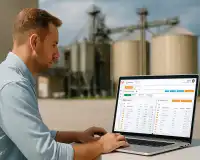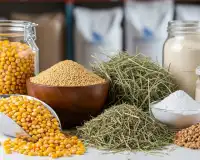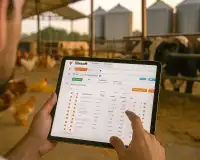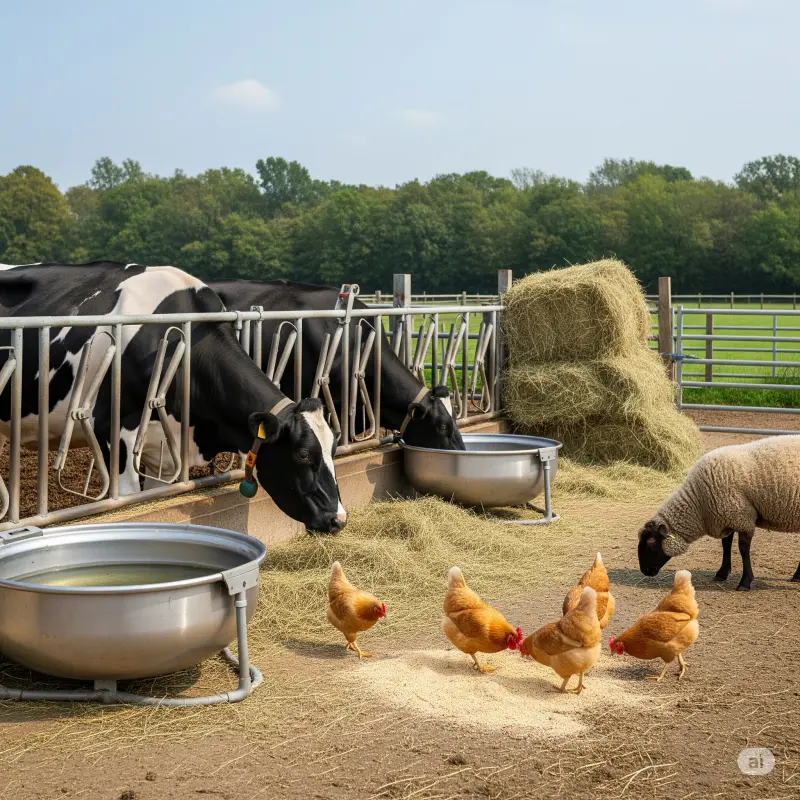Ration Formulation Techniques for Beginners
Learn the basic principles and practical steps of ration formulation for your animals' health and productivity. From cost control to performance, find the key tips for ration formulation in this guide!
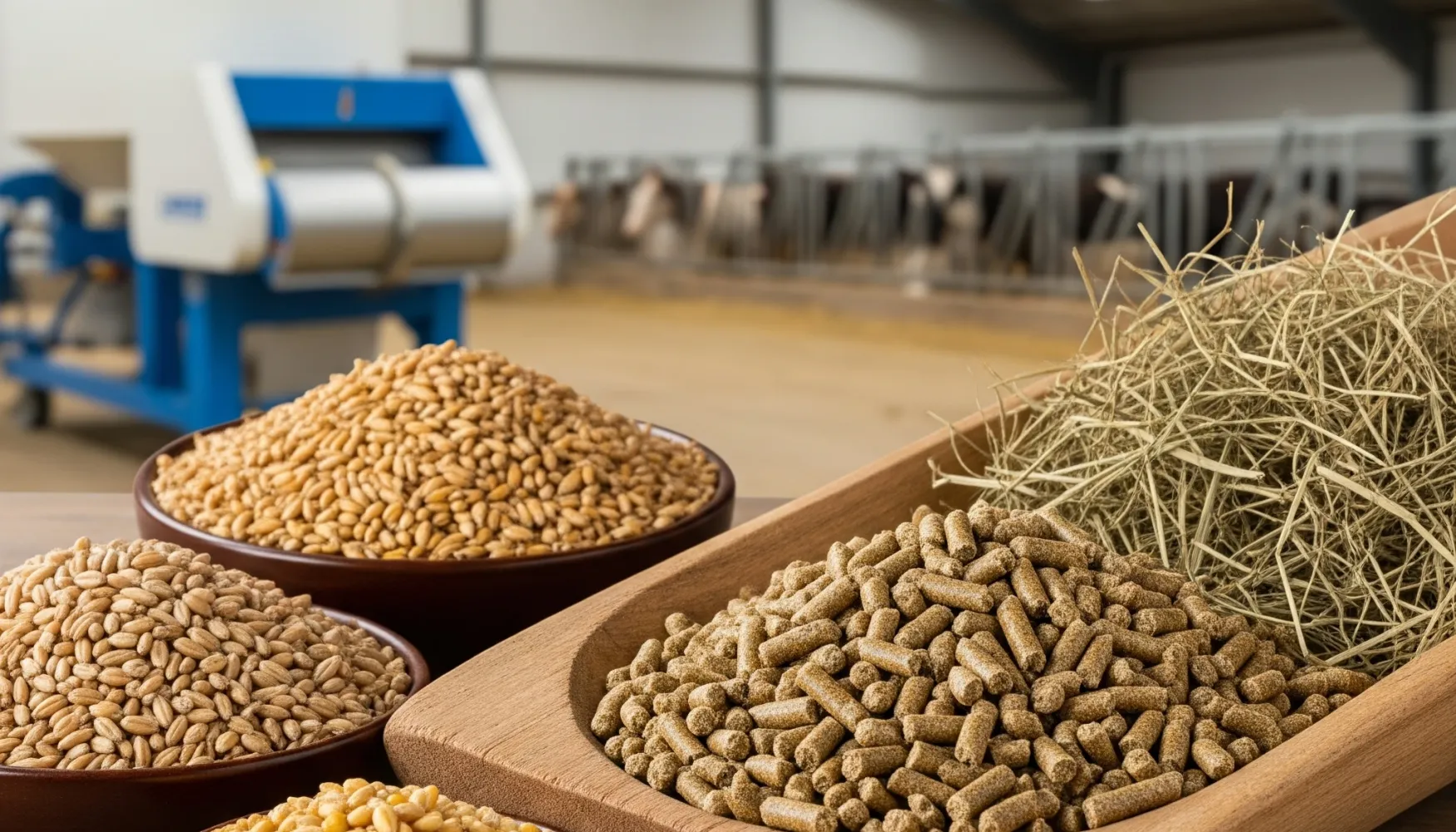
What is Ration Formulation?
Ration formulation is the art of creating a balanced feed mixture by combining various feed raw materials in specific proportions to meet the nutrient needs of animals during a specific period (growth, milk yield, gestation, etc.). This mixture not only fills their stomachs but also helps the animal utilize its genetic potential in the best possible way.
Why Should You Prepare Your Own Ration?
- Cost Control: By preparing your own ration, you can significantly save compared to purchasing feed from external sources.
- Increased Performance: Rations optimized for your animals' specific needs mean better growth, higher milk/meat/egg yield, and overall health.
- Control over Raw Materials: You ensure the quality and content of the raw materials you use.
Basic Steps and Techniques:
- Determine the Animal's Nutrient Needs:
Every animal species, age group, and production level has different nutrient requirements. For example, the needs of a dairy cow are not the same as a beef calf or a laying hen with chicks. You can usually find this information in reliable agricultural sources, university publications, or animal nutrition tables. Basic needs include:- Energy: Fuel required for the animal's life functions and production. (Example: Corn, barley)
- Protein: Basic building block for muscle, milk, eggs, and body tissues. (Example: Soybean meal, sunflower meal)
- Vitamins and Minerals: Essential for a healthy metabolism, immune system, and bone development. (Usually added as a premix)
- Fiber: Critical for digestive health, especially in ruminants. (Example: Alfalfa, straw)
- Water: Vital for all life functions; continuous access to clean and fresh water must be provided.
- Get to Know Feed Raw Materials:
It is important to know the nutrient content of each raw material you will use in the ration. Here are some common raw materials and their basic nutritional values:
Raw Material Main Nutritional Value Purpose of Use Corn Grain High Energy Growth, yield increase Barley Energy, Fiber Energy source, digestive regulator Wheat Energy Energy source (too much can be sticky) Soybean Meal High Protein Muscle development, milk/egg production Sunflower Meal Protein, Fiber Protein support, roughage balance Alfalfa Hay Protein, Fiber, Calcium Roughage, protein and mineral support Wheat Straw High Fiber Roughage, feeling of fullness Molasses Energy, Palatability Increase feed intake Marble Dust (Calcium Carbonate) Calcium Bone health, eggshell quality DCP (Dicalcium Phosphate) Phosphorus, Calcium Mineral supplement Animal-Specific Premix Vitamins, Trace Minerals Metabolic functions, immunity - Calculation and Balancing (Pearson Square - Simple Example):
For beginners, we can use the "Pearson Square" method. This method is ideal for balancing a specific nutrient (usually protein) in a mixture of two raw materials.
Soybean (45% Protein) ------ (18 - 10) = 8 Parts Corn /| | Target Protein 18% | \|/ Corn (10% Protein) ------ (45 - 18) = 27 Parts Soybean
In this case, when 8 parts corn are mixed with 27 parts soybean, you will get a mixture with approximately 18% protein. Total parts = 8 + 27 = 35.
Proportions: Corn = (8/35) * 100 = 22.86%; Soybean = (27/35) * 100 = 77.14%
This is a simple start. In real rations, multiple nutrients and raw materials are considered. - Mixing and Application:
It is very important to homogeneously mix the ration you have prepared. You can mix it by hand or with feed mixer machines. Make sure the ration is provided to the animals regularly and in sufficient quantities. - Observation and Evaluation:
Observe your animals carefully after they consume the ration. Their health status, appetite, live weight gain, or changes in yield will give you information about the effectiveness of the ration. Make adjustments to the ration if necessary.
Tips for a Successful Ration:
- Always use reliable and fresh raw materials.
- Ensure your animals have access to clean and ample water.
- Make ration changes gradually; sudden changes can lead to digestive problems.
- Initially, seeking support from an agricultural engineer, veterinarian, or animal nutrition specialist will minimize errors.
- Start small-scale and develop your ration as you gain experience.
Ration formulation, although it requires some practice and knowledge, is one of the most valuable investments you can make for the health of your animals and the productivity of your farm. With this basic information, you can take the first step and provide the best for your animals.


